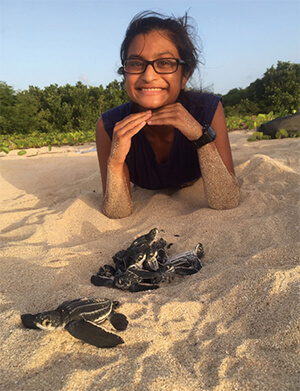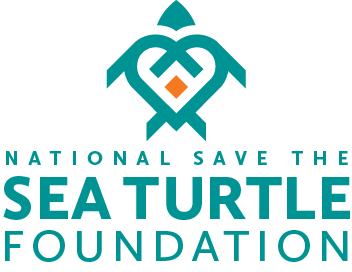Evaluating the Effects of Paternity on Hatchling Body Size in Leatherback Sea Turtle Hatchlings
(Dermochelys coriacea) Using DNA Microsatellites
Shreya Banerjee,
M.S. Student, Marine Biology,
Scripps Institution of Oceanography
University of California, San Diego
M.S. Student, Marine Biology,
Scripps Institution of Oceanography
University of California, San Diego
Marine Mammal and Turtle Division
Southwest Fisheries Science Center
National Marine Fisheries Service, NOAA
8901 La Jolla Shores Drive
La Jolla, CA, 92037
Southwest Fisheries Science Center
National Marine Fisheries Service, NOAA
8901 La Jolla Shores Drive
La Jolla, CA, 92037
Male leatherback turtles (Dermochelys coriacea) are rarely seen, and it is difficult to assess aspects of their reproductive success, such as the quantity and body size of their offspring. Molecular techniques can reveal paternal contributions to hatchlings without sampling the males themselves, provided that the female’s identity is known. From June through August (2015, 2016), we measured body size and collected skin samples from leatherback hatchlings at Sandy Point National Wildlife Refuge, St. Croix, USVI. Seven microsatellite DNA markers will be used to evaluate paternity within 20 leatherback nests laid by individual females. Maternal and hatchling genotypes will be used to reconstruct paternal genotypes and assign hatchlings to a father. For nests with multiple paternity, we will compare the carapace lengths and weights of hatchlings from the same mother but from different fathers to determine whether there is a significant difference in size for hatchlings based on paternal identity. We will determine whether nests with multiple paternity have greater size variation than single paternity nests.
We will also quantify the overall size variation among leatherback hatchlings at SPNWR. Understanding factors that affect hatchling body size, which may be a measure of fitness, and identifying males through paternity analysis will help inform management strategies for leatherbacks. We greatly appreciate the financial support of The National Save The Sea Turtle Foundation in furthering this important research.

Objectives:
Determine if there is a correlation between hatchling size variation and differential paternity within leatherback clutches.
Determine whether there is a correlation between hatchling size variation and the number of contributing fathers among leatherback clutches.
Quantify overall leatherback hatchling size variation at Sandy Point National Wildlife Refuge, St. Croix, USVI.
Expected Outcomes:
A preliminary study using eight nests with 12 hatchlings each revealed multiple paternity in four out of eight nests. For these four nests, we found no significant difference between the sizes of hatchlings based on paternal identity within a clutch. A larger sample size is needed to strengthen and further evaluate this conclusion. This investigative study found a much higher rate of multiple paternity (50%) than the previously reported rate of 23.6% (Stewart and Dutton, 2014). The eight nests analyzed were selected because they had the highest size variation of nests measured. It is possible that this biased selection, in addition to small sample size, explains the high rate of multiple paternity. This indicates that nests with multiple paternity may have more within nest body size variation, and this warrants further investigation with more hatchlings from additional nests using random selection of both nests and hatchlings.
Helping Sea Turtles Survive for 38 Years
A NON-PROFIT ORGANIZATION
State of Florida Registration Number CH-2841 | Internal Revenue Code 501 (c) (3)
Web Design & Development by Web Expressions, LLC

